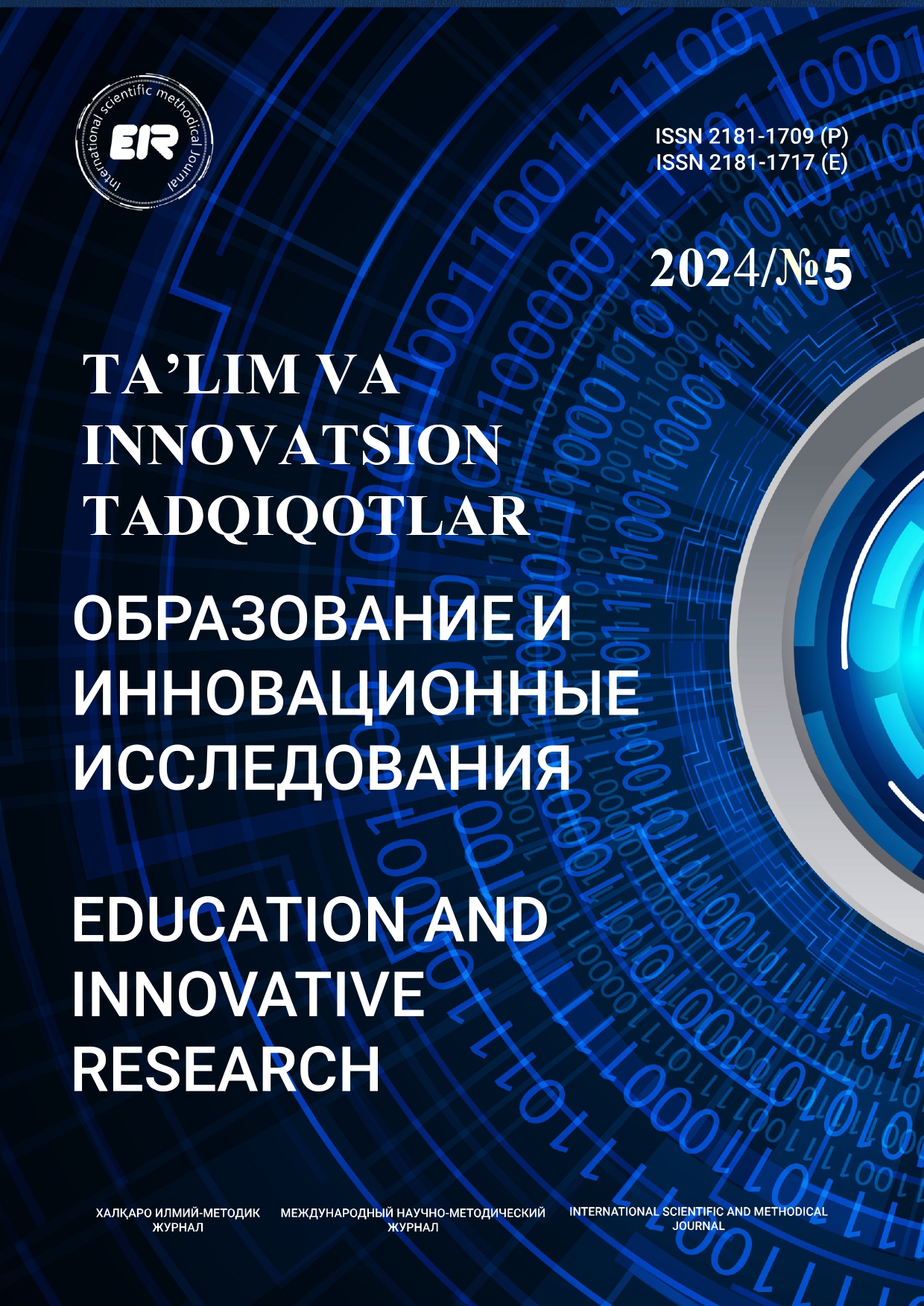BENEFITS OF USING AUGMENTED REALITY (AR) TECHNOLOGIES IN EDUCATION
Satorov Sardor Abdumuratovich Termiz State Pedagogical Institute is a teacher, Abdumo’minov Burkhanjon Sunnatillo ugli, teacher at Termiz State Pedagogical Institute, Eshboyev Umid Shukhrat ugli, a teacher at Termiz State Pedagogical Institute
Keywords:
augmented reality, education, technology, learning, engagementAbstract
Augmented reality (AR) technologies are emerging as a powerful tool in education, offering innovative ways to engage students and enhance the learning experience. This article explores the benefits of integrating AR technologies into educational settings. It discusses how AR can increase student engagement, facilitate deeper learning experiences, improve data retention, and foster collaboration among students. In addition, the paper explores the potential of AR to personalize learning, accommodate different learning styles, and prepare students for future careers in the digital world. Overall, AR technologies offer a promising way to transform education and prepare students for success in the 21st century.
References
Klopfer, E., Squire, K., & Jenkins, H. (2008). Environmental Detectives - The development of an augmented reality platform for environmental simulations. Educational Technology Research and Development, 56(2), 203-228.
Dunleavy, M., Dede, C., & Mitchell, R. (2009). Affordances and limitations of immersive participatory augmented reality simulations for teaching and learning. Journal of Science Education and Technology, 18(1), 7-22.
Billinghurst, M., Weghorst, S., & Furness, T. (2001). Shared Space: An Augmented Reality Approach to Computer Supported Collaboration. Proceedings of the Virtual Reality International Conference (VRIC).
Akçayır, M., & Akçayır, G. (2017). Advantages and challenges associated with augmented reality for education: A systematic review of the literature. Educational Research Review, 20, 1-11.
Johnson, L., Adams Becker, S., Estrada, V., & Freeman, A. (2016). NMC Horizon Report: 2016 Higher Education
Edition. The New Media Consortium.
САТТОРОВ, С. (2023). ДАРС ЖАРАЁНИДА ЎҚУВЧИЛАР ОНГЛИ ИНТИЗОМЛИЛИГИНИ
РИВОЖЛАНТИРИШНИ УСЛУБИЙ АСОСЛАРИ. Journal of Pedagogical and Psychological Studies, 1(6), 3-8. Sattorov, S. Discipline and the dyad of» master-study» SCIENCE AND INNOVATION INTERNATIONAL SCIENTIFIC JOURNAL VOLUME 2 ISSUE 5 MAY 2023 UIF-2022: 8.2| ISSN: 2181-3337| SCIENTISTS. UZ https:// doi. org/10.5281/zenodo, 7949575.
Abdimuradovich, S. S. (2022). THE MAIN FACTORS OF INDISCIPLINE AMONG STUDENTS OF GENERAL EDUCATION SCHOOLS. European International Journal of Multidisciplinary Research and Management Studies, 2(12), 242-247.
Abdumo’minov , BS o’g’li, & Nuraliyeva , FA qizi. (2023).





